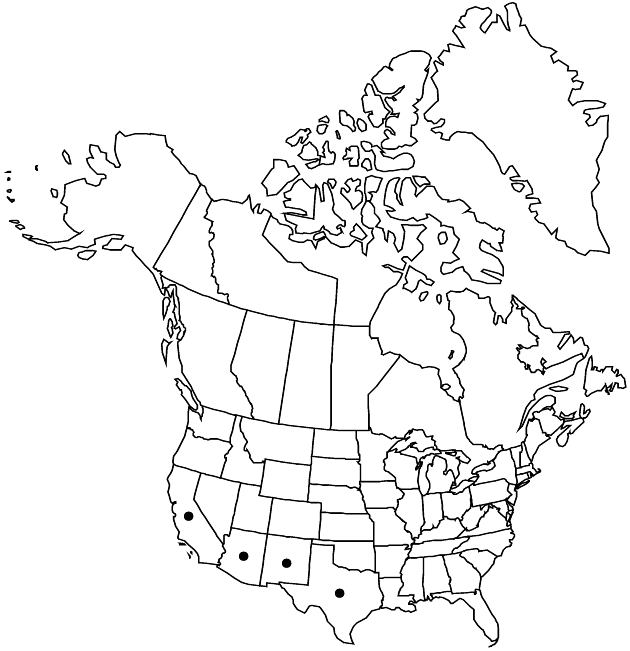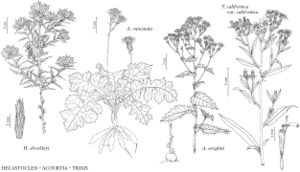Trixis californica var. californica
Plants 20–200 cm. Leaves usually ascending, almost parallel with stems; petioles winged, 1.5–5 mm; blades linear-lanceolate to lanceolate, 2–11 cm, bases acute, margins entire or denticulate (often revolute), apices acute, induments: abaxial faces glandular-puberulent and sparsely strigose (sometimes only on veins), adaxial faces glandular and strigose to pilose; stomates on both faces. Heads usually in corymbiform or paniculiform arrays, rarely borne singly. Peduncles 5–45 mm, often ± inflated distally. Calyculi of 5–7 linear to lanceolate or ovate bractlets 5–16 mm. Phyllaries usually 8, linear, 8–14 mm, apices acute. Florets 11–25; corolla tubes 6–9 mm, outer lips 5–8 mm, inner 4–5.5 mm. Cypselae 6–10.5 mm, papilla-like double hairs producing mucilage when wetted; pappi 7.5–12 mm. 2n = 54.
Phenology: Flowering Jan–Nov.
Habitat: Dry, rocky slopes, washes, desert flats, thorn scrub
Elevation: 200–1600(–2200) m
Distribution

Ariz., Calif., N.Mex., Tex., Mexico (Baja California, Baja California Sur, Chihuahua, Coahuila, Durango, Nuevo León, San Luis Potosí, Sinaloa, Sonora, Tamaulipas, Zacatecas).
Discussion
Selected References
None.
